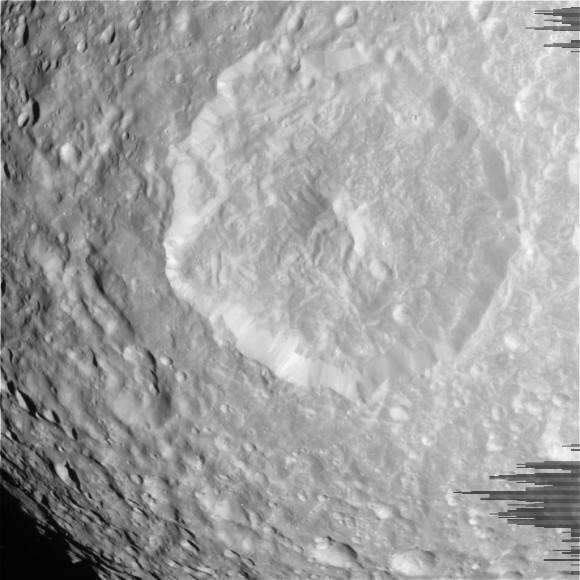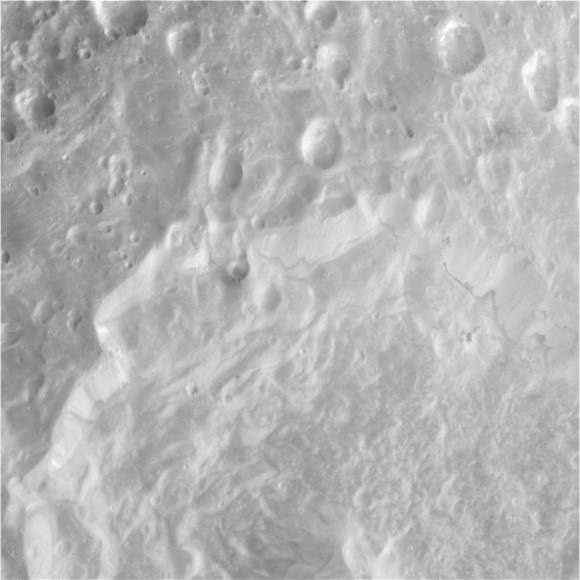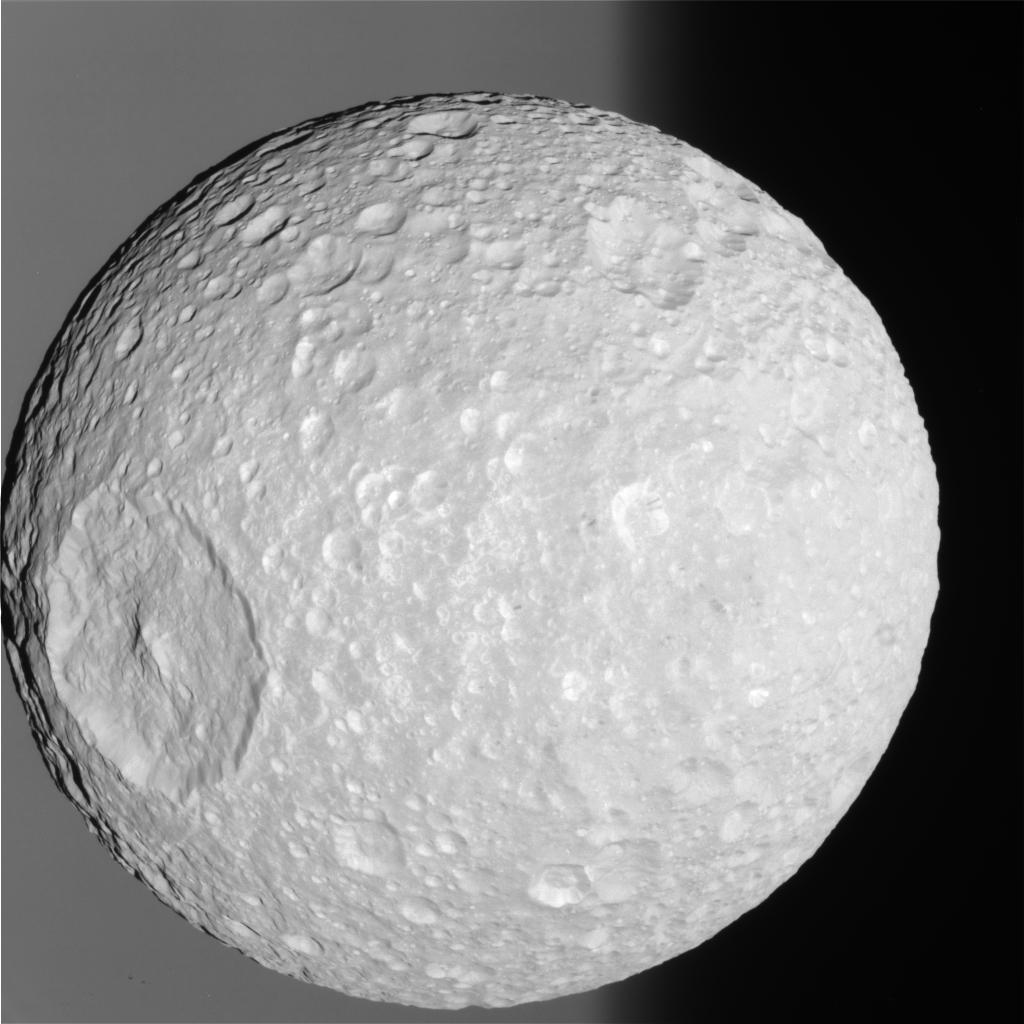[/caption]
On February 13, 2010, Cassini flew by Saturn’s moon Mimas, coming as close as 9,500 km.
It passed directly over Herschel, a giant crater whose creation almost shattered the moon … and which, in its appearance in some earlier images, earned Mimas the nickname “Death Star”, after the iconic Star Wars prop.
The Cassini team has just released some “Raw Previews” of Cassini’s close encounter; time to feast your eyes.

The Cassini Equinox Mission, of which the Mimas flyby is but a small part, is a joint United States and European endeavor. The Jet Propulsion Laboratory, a division of the California Institute of Technology in Pasadena, manages the mission for NASA’s Science Mission Directorate, Washington, D.C. The Cassini orbiter was designed, developed and assembled at JPL. The imaging team consists of scientists from the US, England, France, and Germany. The imaging operations center and team lead (Dr. C. Porco) are based at the Space Science Institute in Boulder, Colo.

Source: CICLOPS (Cassini Imaging Central Laboratory for Operations)


Time for the classic:
THAT’S NO MOON!
And btw: This really looks like a model 😉 Someone hang that up before a blurred wall.
(In fact, that’s not so wrong after all. It just “hangs” in front of a blurred Saturn!)
All of Saturn’s 31 known satellites have a density approximately < 2 gm/cm3. This indicates they are composed of 30 to 40% rock and 60 to 70% water ice.
What I'd like to know… is HOW did Saturn do that? Captured cometary bodies? Ongoing cold flow chemosynthesis?
Fascinating.
A little bit of (image processing) on these reveals layered sediments on the crater walls. Very distinct differences in Albedo.
The close ups hint at far more complex surface patterning then I would have imagined.
If only we had an Human Outpost in the Saturn System, and a flotilla of remote sensing satellites. 🙂 Generations worth of exploration await.
Damian
Fear will keep them in line….
…fear of this battle station.
Great images!
Aqua,
Saturn has rather more than 31 moons!
Of the planetary moons orbiting the planets Saturn to Neptune (and even including Pluto), only one has a density >2 (Triton), and that’s only just over 2 (of course, most moons’ densities are not known), so whatever led to Saturn’s moons having relatively low densities, it may be the same cause for all the other moons too. By the way, comets have even lower densities.
Go find “Buck Rogers in the Moons of Saturn”.
Coincidentally, I spied this arxiv news:
“Small Asteroids Are Held Together by Van Der Waals Forces
Small spinning asteroids are piles of rubble and dust that ought to fly apart but don’t. Now astronomers have worked out why not
[…]
Spin rate statistics suggest that Ikotawa and asteroids like it are piles of rubble held together by gravity on scales of 150 metres and larger. But smaller boulders should fly off into space at this rate of spin.
But that creates a puzzle. Images from Hayabusa show that on smaller scales, Ikotawa is little more than a collection of boulders and dust. But if gravity cannot beat the centripetal forces involved, what’s holding Ikotawa together?
[…]
Scheeres and co show that none of the usual suspects is the likely culprit. Instead it looks as if small asteroids are held together by van der Waals forces.
That has two interesting implications. First, for asteroid evolution. Scheeres and co suggest that spinning asteroids gradually throw off larger boulders until they end up as rubble piles held together by van der Waals forces. That may help to explain the size distribution of asteorids.
Second, this process may also explain, at least in part, the formation of planetary rings such as those around Saturn which are made up exclusively of small bodies.
If Scheere and co are right, their conclusions will lead to a significant re-assessment of the surface properties of asteroids, not to mention of the structure and evolution of planetary rings. No small feat.
Ref:arxiv.org/abs/1002.2478: Scaling Forces To Asteroid Surfaces: The Role Of Cohesion [My bold.]”
Jean. ‘ so whatever lead to Saturn’s moons ‘ – it’s led not lead.
@Tobjorn Larsson:
It’s EU theory holding these asteroids together, don’t you know?